- Choosing the Right Seeds for Growing Mint
- Consider the following factors when choosing mint seeds:
- Conclusion
- Preparing the Soil for Growing Mint
- 1. Choose the Right Location
- 2. Remove Weeds and Debris
- 3. Loosen the Soil
- 4. Amend the Soil
- 5. Test the Soil pH
- 6. Level the Soil
- 7. Create Raised Beds (Optional)
- 8. Provide Good Drainage
- Planting Mint Seeds in Containers
- Choosing the Right Container
- Preparing the Soil
- Sowing the Seeds
- Watering and Care
- Thinning and Transplanting
- Harvesting Mint
- Caring for Mint Plants at Home
- 1. Watering
- 2. Sunlight
- 3. Soil
- 4. Fertilizing
- 5. Pruning
- 6. Controlling Spread
- 7. Pests and Diseases
- Watering and Fertilizing Mint Plants
- Harvesting Mint Leaves for Culinary Use
- Dealing with Common Pests and Diseases in Mint
- 1. Aphids
- 2. Mint Rust
- 3. Mint Leaf Beetle
- 4. Mint Wilt
- 5. Slugs and Snails
- Conclusion
- Tips for Growing Mint in the Garden
- “Question-Answer”
- Can I grow mint from seed?
- What is the best time to sow mint seeds?
- How should I sow mint seeds?
- How long does it take for mint seeds to germinate?
- Can I grow mint from cuttings?
- What are some tips for growing mint?
- “Video” How to grow mint (pudina)at home easily from cuttings?/ఇంట్లో పుదీన సులువుగా పెంచడం ఎలా?#mint #tip
Mint is a versatile herb that is well-known for its refreshing scent and taste. It is a popular choice for both culinary and medicinal purposes. Not only is mint easy to grow, but it also adds a pleasant aroma to your home and garden. Whether you want to grow mint from seed indoors or in your garden, this article will provide you with all the information you need to get started.
Before you start growing mint from seed, it is important to understand the different varieties available. There are several types of mint, including peppermint, spearmint, and chocolate mint, each with its own distinct flavor and scent. Depending on your preference, you can choose the variety that suits your taste best.
When growing mint from seed, it is recommended to start indoors. Mint seeds can be sown directly into pots or trays filled with seed compost. Make sure to keep the soil moist and place the pots in a warm location with plenty of sunlight. It is important to note that mint tends to spread vigorously, so it is advisable to plant it in containers to prevent it from taking over your garden.
In conclusion, growing mint from seed is a rewarding and enjoyable experience. With its many uses and delightful aroma, mint is a great addition to any home or garden. By following the tips outlined in this article, you will be well on your way to growing your own mint plants from seed and enjoying the benefits they bring.
Choosing the Right Seeds for Growing Mint
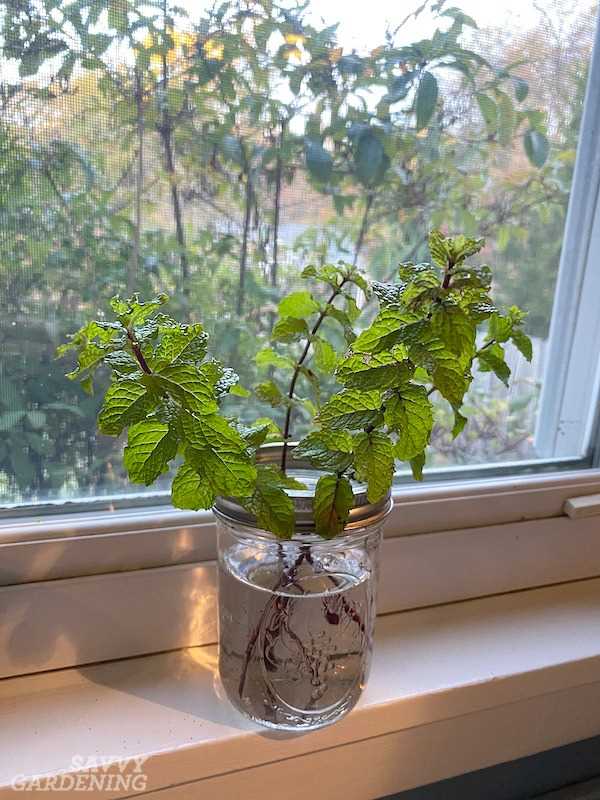
When it comes to growing mint from seeds, it’s important to choose the right variety that suits your needs and growing conditions. Mint plants come in different types, each with its own unique flavor and aroma.
Consider the following factors when choosing mint seeds:
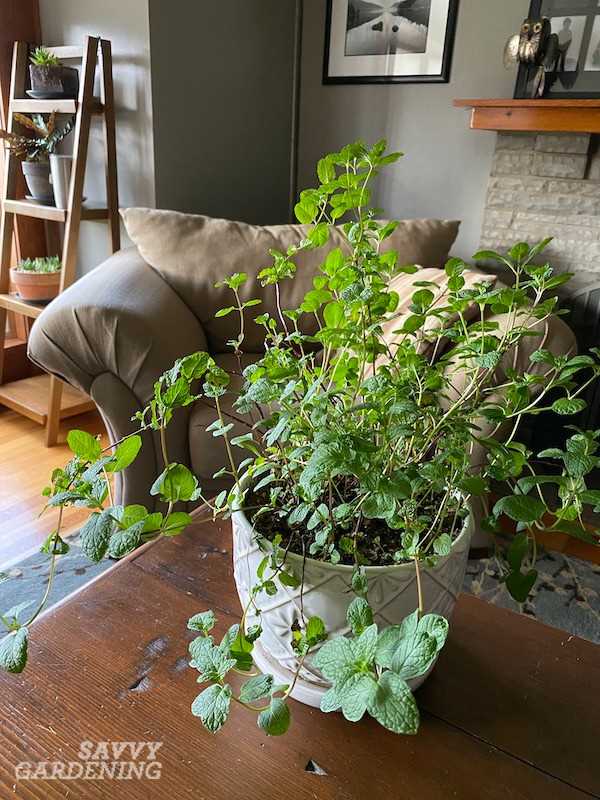
- Variety: There are several popular varieties of mint, such as spearmint, peppermint, chocolate mint, and apple mint. Each variety has its own distinct flavor profile, so choose the one that appeals to you the most.
- Growing conditions: Mint is a hardy herb that can thrive in various conditions, but certain varieties have specific preferences. Some mints prefer full sun, while others tolerate partial shade. Take into account the amount of sunlight your garden or indoor space receives before selecting the variety of mint seeds.
- Intended use: Consider how you plan to use the mint. If you primarily intend to use it for culinary purposes, varieties like spearmint or peppermint may be the best choice. On the other hand, if you’re looking for a mint that’s primarily used for its fragrance, you might want to consider varieties like chocolate mint or apple mint.
- Growth habit: Mint plants can spread rapidly and become invasive if not properly controlled. If you have limited space or prefer to grow mint in pots, consider selecting varieties that have a more compact growth habit.
Once you’ve considered these factors, you can find a variety of mint seeds available for purchase online or at local gardening stores. Look for reputable seed suppliers to ensure you’re getting high-quality seeds that will germinate and grow into healthy mint plants.
Conclusion
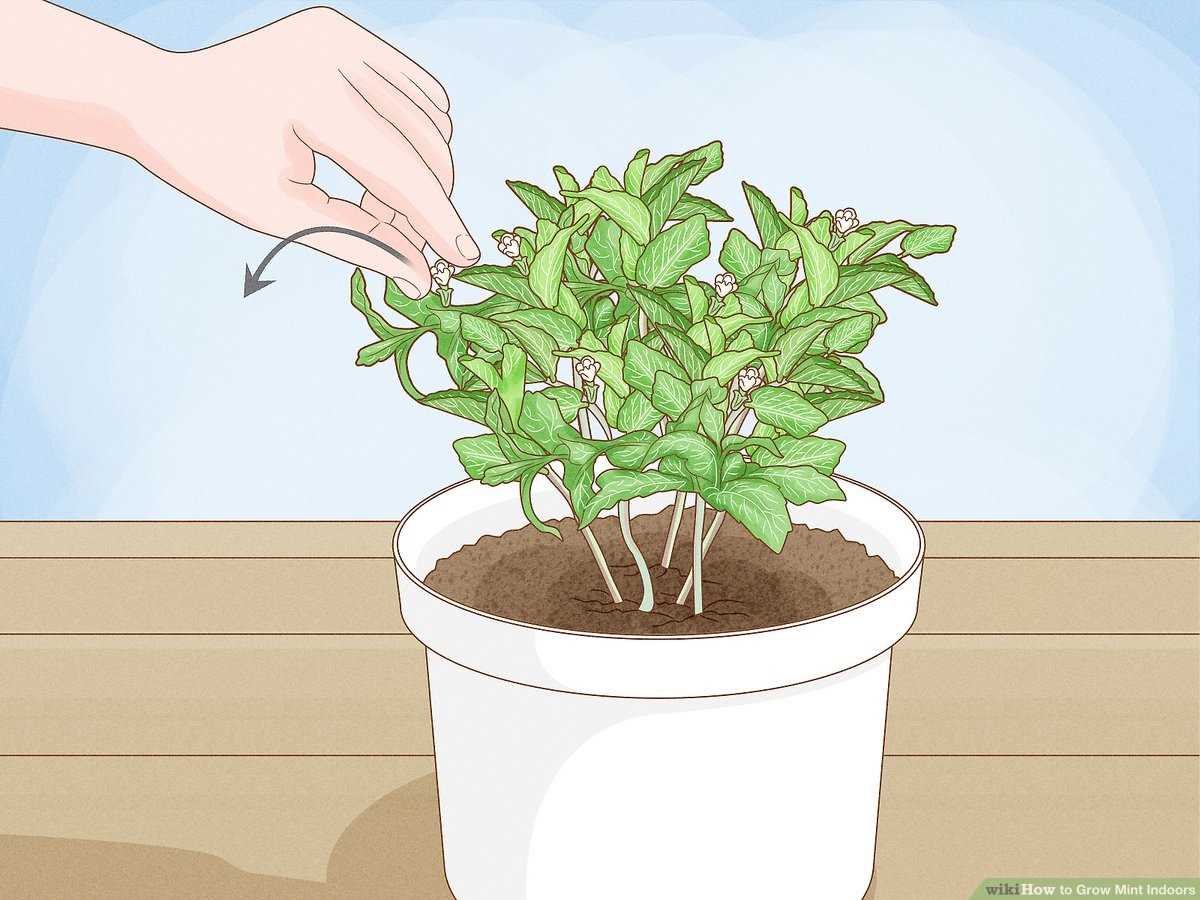
Choosing the right mint seeds is crucial for successful growth and a satisfying harvest. Consider the variety, growing conditions, intended use, and growth habit to select the perfect mint seeds for your garden or indoor space. With the right seeds, you’ll be on your way to enjoying fresh, aromatic mint leaves in no time!
Preparing the Soil for Growing Mint
Mint is a vigorous and fast-growing herb that requires well-drained soil with a pH level between 6.0 and 7.0. Here are some steps to prepare the soil for growing mint:
1. Choose the Right Location
Mint prefers a sunny to partially shaded location. Choose a spot in your garden that receives at least 4-6 hours of sunlight per day. Avoid areas that are prone to waterlogging or have poor drainage.
2. Remove Weeds and Debris
Before planting mint, it is important to clear the area of any weeds and debris. Remove any large rocks, sticks, or other debris that may hinder the growth of mint plants.
3. Loosen the Soil
Using a garden fork or a tiller, loosen the soil to a depth of about 8-10 inches. This will improve the drainage and aeration of the soil, allowing the mint roots to grow effectively.
4. Amend the Soil
Mint plants prefer rich and fertile soil. Incorporate organic matter such as compost or well-rotted manure into the soil to improve its fertility. This will provide the necessary nutrients for the mint plants to thrive.
5. Test the Soil pH
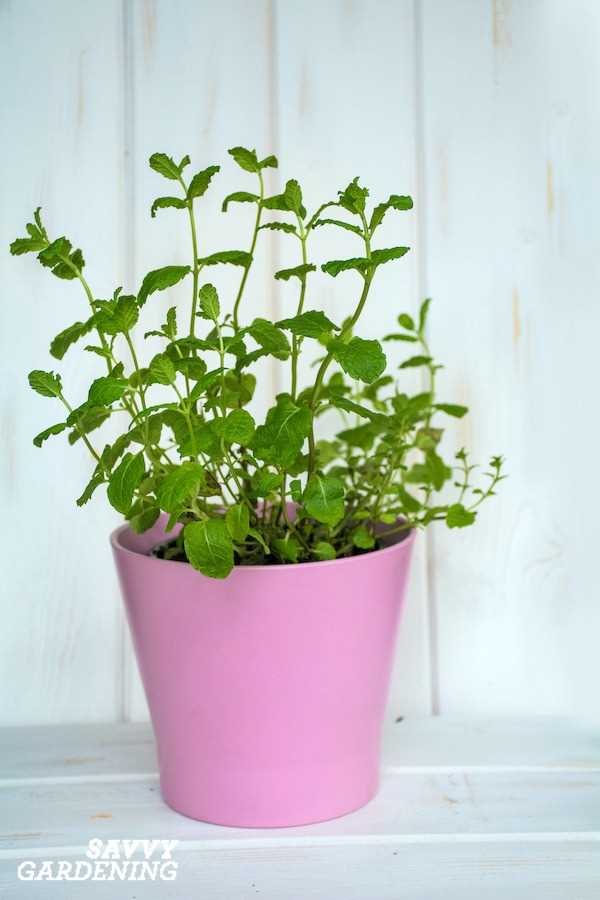
It is essential to test the soil pH before planting mint. You can use a pH testing kit available at most gardening stores. If the soil pH is below 6.0, add lime to raise the pH level. If the pH is above 7.0, add sulfur or peat moss to lower the pH level.
6. Level the Soil
After amending the soil, rake the area to level the surface. This will ensure uniformity in water distribution and encourage even growth of the mint plants.
7. Create Raised Beds (Optional)
If your garden has heavy clay or compacted soil, consider creating raised beds for growing mint. Raised beds provide better drainage and prevent waterlogging, which can be detrimental to mint plants.
8. Provide Good Drainage
Ensure that the area where you are planning to grow mint has good drainage. If the soil has poor drainage, consider adding organic matter or creating raised beds to improve the drainage system.
By following these steps, you can prepare the soil properly for growing mint and create an ideal environment for its growth and development.
Planting Mint Seeds in Containers
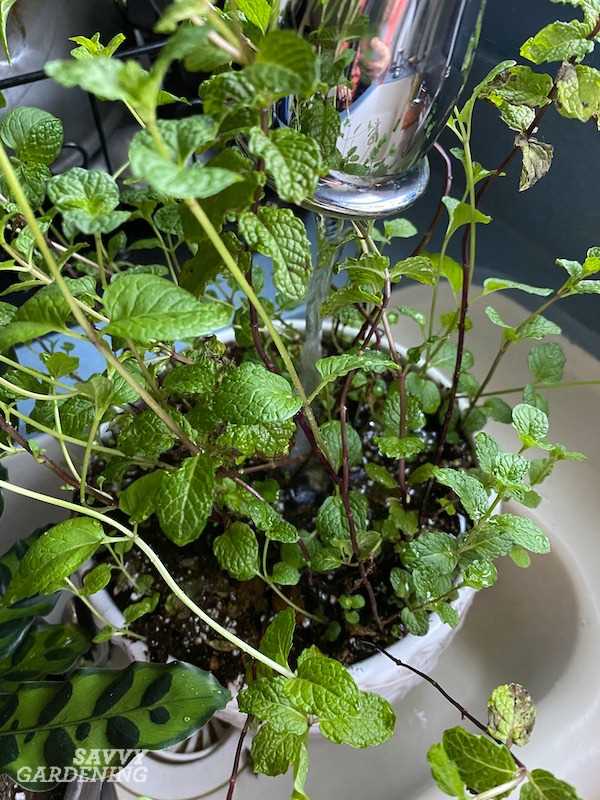
Mint is a versatile herb that can be grown indoors or outdoors in containers. Planting mint seeds in containers is an easy way to have fresh mint on hand for culinary purposes or for adding fragrance to your garden or home.
Choosing the Right Container
When planting mint seeds in containers, it’s important to choose the right container. Mint has a tendency to spread and can quickly take over a garden if not properly contained. Opt for a deep container with drainage holes to prevent waterlogged roots.
Preparing the Soil
Start by filling the container with a rich, well-draining potting soil. Mint prefers a slightly acidic soil with a pH level between 6.0 and 7.0. Before planting, you can amend the soil with compost or organic matter to improve its fertility.
Sowing the Seeds
Mint seeds are very small and should be sown thinly on the soil surface. Gently press the seeds into the soil, but do not cover them with additional soil as mint seeds require light to germinate.
Watering and Care
Mint seeds need to be kept moist but not waterlogged for germination. Water the container regularly, making sure the soil is always slightly damp. Once the seeds have germinated and young seedlings have emerged, you can reduce the frequency of watering.
Place the container in a location where it will receive at least 4-6 hours of sunlight per day. If growing indoors, a sunny windowsill or under artificial grow lights will suffice.
Thinning and Transplanting
Once the seedlings have grown several inches tall, it’s necessary to thin them out. Remove the weaker seedlings, leaving only the strongest ones with enough space to grow. If desired, the thinned seedlings can be transplanted to other containers or used in the kitchen.
Harvesting Mint
Mint can be harvested once it reaches a height of 6-8 inches. Pick the leaves as needed, and make sure to leave at least one-third of the plant intact to allow for regrowth. Regular harvesting will encourage bushier growth and prevent the plant from becoming excessively leggy.
Mint, when planted from seed in containers, can be a rewarding and enjoyable gardening experience. Follow these steps, and soon you’ll have fresh mint at your fingertips for cooking, making tea, or simply enjoying its aromatic scent.
Caring for Mint Plants at Home
Mint plants are fairly easy to care for and can thrive in both indoor pots and outdoor gardens. Here are some tips to help you care for your mint plants:
1. Watering
Mint plants like to be kept consistently moist, so make sure to water them regularly. Keep the soil evenly moist, but be careful not to overwater, as mint plants can develop root rot. Check the moisture level of the soil by sticking your finger about an inch into the soil. If it feels dry, it’s time to water.
2. Sunlight
Mint plants prefer sun and partial shade, so find a place where they can get at least 4-6 hours of direct sunlight each day. However, they can also tolerate some shade, especially in hot climates.
3. Soil
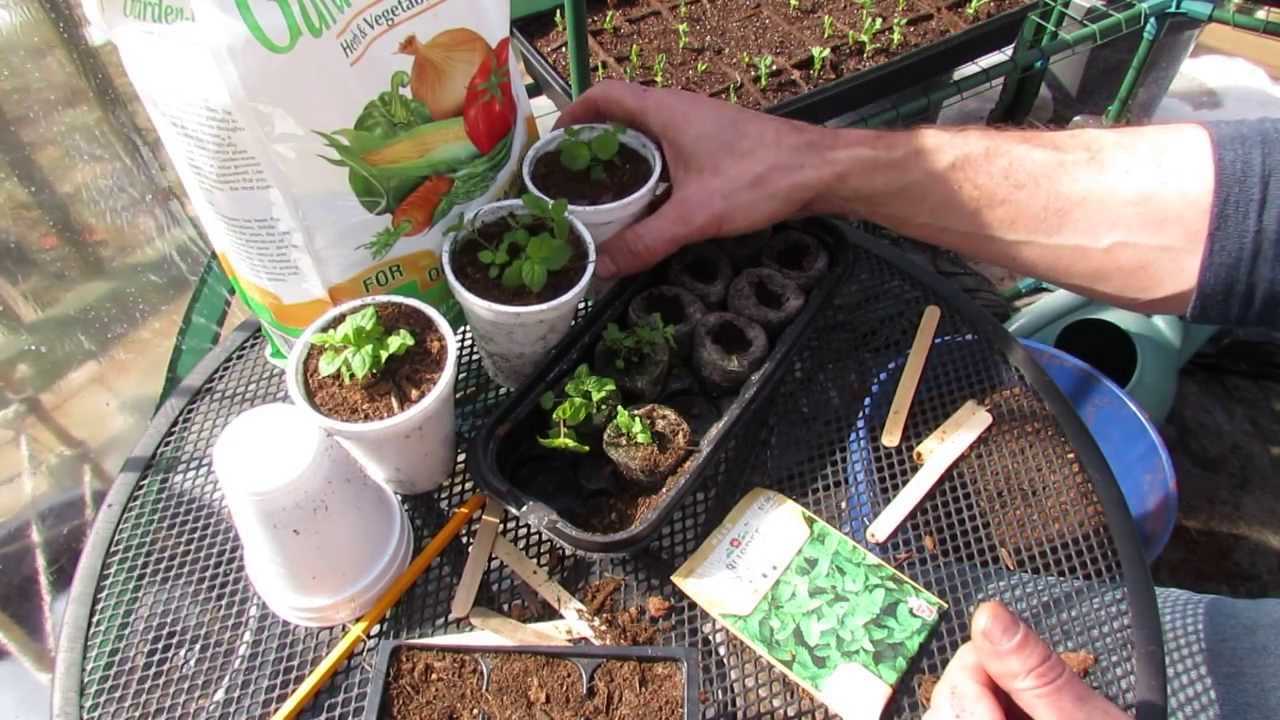
Mint plants prefer moist, well-draining soil. The pH level of the soil should be around 6 to 7. If your soil is heavy or clay-like, you can improve drainage by adding some organic matter, such as compost or aged manure.
4. Fertilizing
Mint plants are not heavy feeders, but you can give them a boost by applying a balanced, slow-release fertilizer once or twice a year. Alternatively, you can use a liquid fertilizer diluted to half strength every 4-6 weeks during the growing season.
5. Pruning
To keep your mint plants tidy and prevent them from becoming too leggy, it’s important to regularly prune them. Pinch or cut off any yellowing or dead leaves, as well as any flowering stems. Pruning will also help promote bushier growth.
6. Controlling Spread
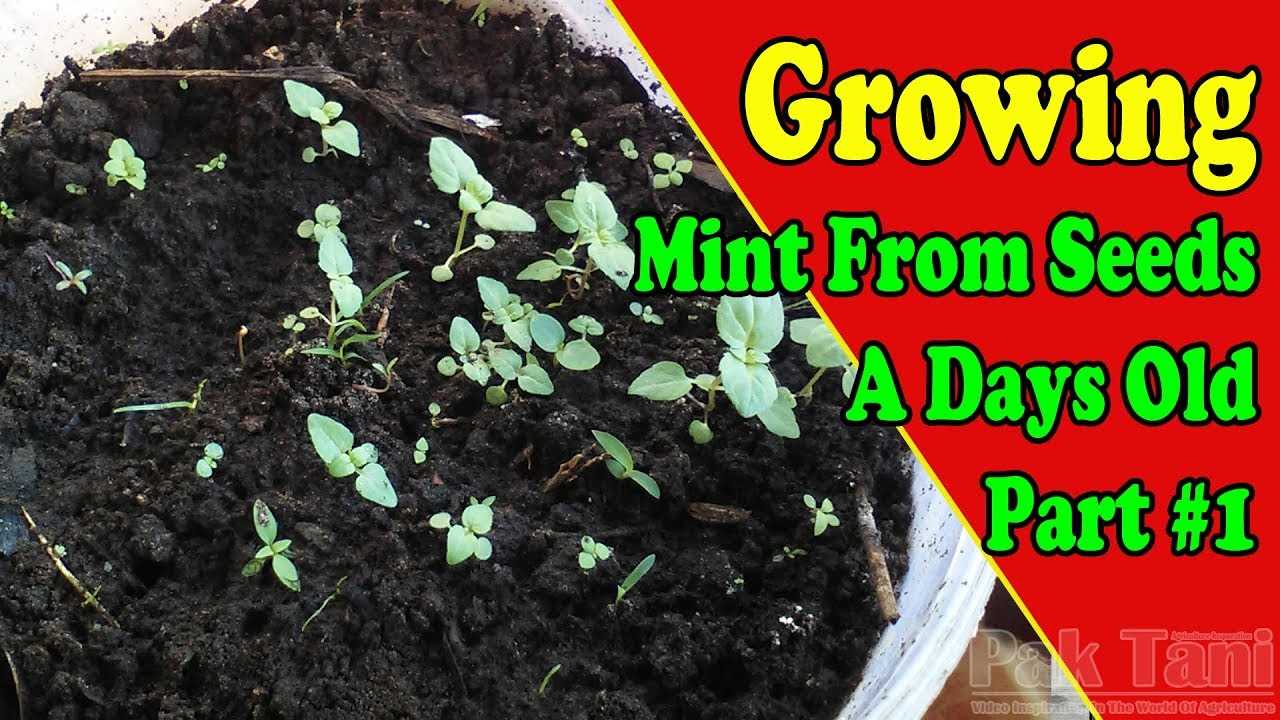
Mint plants can be quite invasive, so it’s important to take measures to control their spread. One way to do this is by planting them in containers or using barriers, such as plastic edging or buried containers, to restrict their root growth. You can also regularly trim back any runners or underground stems that start to spread beyond the desired area.
7. Pests and Diseases
Mint plants are generally resistant to pests and diseases. However, aphids, spider mites, and mint rust can occasionally be a problem. If you notice any signs of infestation or disease, promptly remove the affected parts and treat the plant with an appropriate organic pesticide or fungicide.
By following these care tips, you can enjoy a healthy and thriving mint plant at home.
Watering and Fertilizing Mint Plants
Mint plants require regular watering to thrive. The soil around the plants should be kept consistently moist but not waterlogged. This can be achieved by watering the plants deeply once or twice a week, making sure that the water reaches the roots. During hot summer months, mint plants may require more frequent watering to prevent wilting and drying out.
It is important to avoid overwatering mint plants, as they can develop root rot if the soil remains constantly wet. To prevent this, make sure the soil has good drainage and allow the top few inches to dry out slightly before watering again.
When it comes to fertilizing mint plants, they generally do not require much additional fertilization if planted in nutrient-rich soil. However, if your soil is poor, you can apply a balanced, slow-release fertilizer once or twice a year. Avoid over-fertilizing mint, as this can lead to excessive leaf growth and diminish its flavor.
Alternatively, you can use organic fertilizers, such as compost or well-rotted manure, to provide nutrients to your mint plants. These natural fertilizers will help improve soil fertility and promote healthy growth.
It is recommended to perform a soil test before applying any fertilizer to determine the specific nutrient needs of your mint plants. This will ensure that you provide the appropriate amount of nutrients for optimal growth and flavor.
Harvesting Mint Leaves for Culinary Use
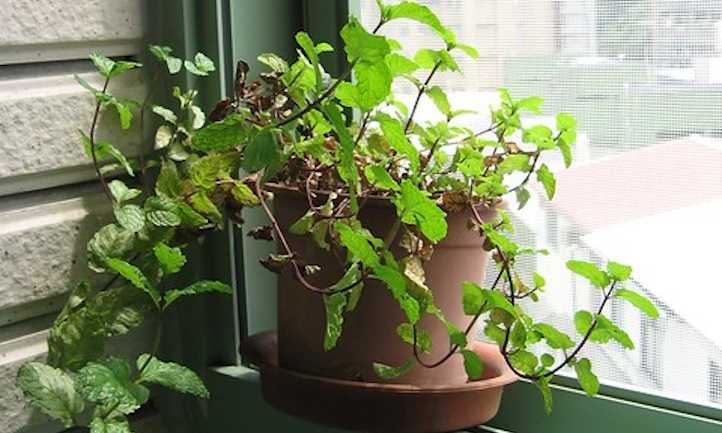
Mint is a versatile herb that is commonly used in culinary applications. Whether you’re growing mint in your garden or indoors, harvesting the leaves properly is essential to ensure the best flavor and freshness. Here are some steps to follow when harvesting mint leaves for culinary use:
- Choose the right time: Mint leaves can be harvested throughout the growing season, but they are at their best just before the plant starts to flower. This is typically when the leaves have the highest concentration of essential oils, which contribute to the minty flavor.
- Select the leaves: Look for healthy-looking leaves that are free from any signs of damage or disease. Choose leaves that are well-formed and vibrant green in color.
- Use sharp scissors: When harvesting mint leaves, it’s important to use sharp scissors or pruning shears to prevent damaging the plant. Make clean cuts close to the stem to encourage new growth.
- Trim the stems: If you’re harvesting a larger quantity of mint leaves, you may want to trim the stems as well. Remove any woody or tough parts of the stems to ensure that only the tender leaves are used.
- Store properly: After harvesting, it’s important to store mint leaves properly to maintain their flavor and freshness. Rinse the leaves gently under cold water to remove any dirt or debris, and then pat them dry with a paper towel. You can store the leaves in airtight containers or resealable bags in the refrigerator for up to a week.
- Use in your favorite recipes: Mint leaves can be used in a variety of dishes, such as salads, drinks, desserts, and sauces. The leaves can be added whole or chopped, depending on the recipe. Experiment with different dishes to discover your favorite ways to use mint.
By following these steps, you can harvest mint leaves from your garden or indoor plants and use them to enhance the flavor of your favorite culinary creations.
Dealing with Common Pests and Diseases in Mint
Mint plants are generally quite resilient and resistant to pests and diseases. However, there are a few common issues that you may encounter when growing mint at home or in the garden. Here are some of the most common pests and diseases that affect mint, along with tips on how to deal with them.
1. Aphids
Aphids are tiny insects that feed on the sap of mint plants. They can cause stunted growth, curled leaves, and a sticky residue on the plant. To get rid of aphids, you can spray the affected plants with a mixture of water and mild dish soap. Alternatively, you can introduce natural predators like ladybugs or lacewings to your garden, as they feed on aphids.
2. Mint Rust
Mint rust is a fungal disease that causes orange or brown spots on the leaves. It can lead to defoliation and weaken the plant. To prevent mint rust, make sure to plant mint in well-draining soil and provide good air circulation. If your plants are already infected, remove and destroy the affected leaves to stop the spread of the disease. In severe cases, you may need to use a fungicide according to the package instructions.
3. Mint Leaf Beetle
The mint leaf beetle is a small, metallic green beetle that feeds on mint leaves, causing them to become skeletonized. To control mint leaf beetles, you can manually remove them from the plants and drop them into a bucket of soapy water. Insecticidal soap or neem oil can also be effective in reducing their population.
4. Mint Wilt
Mint wilt is a soilborne disease caused by fungi. It causes wilting, yellowing, and eventually death of the plant. To prevent mint wilt, avoid overwatering and make sure that the soil has good drainage. If your plants show signs of wilt, remove and destroy them to prevent the spread of the disease. Avoid planting mint in the same location for several years to reduce the risk of infection.
5. Slugs and Snails
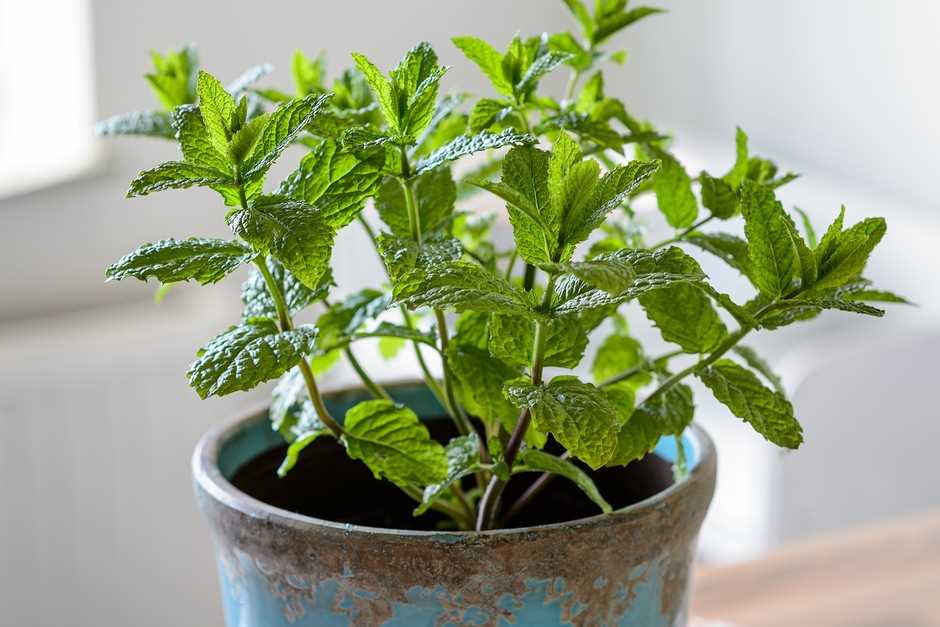
Slugs and snails can feed on mint leaves, leaving behind large holes and slime trails. To control these pests, you can handpick them from the plants in the early morning or evening when they are most active. You can also create barriers around your mint plants using copper tape or diatomaceous earth.
Conclusion
By being vigilant and taking proactive measures, you can successfully deal with common pests and diseases that may affect your mint plants. Regularly inspecting your plants, providing proper care, and using the appropriate control methods will help keep your mint healthy and thriving.
Tips for Growing Mint in the Garden
Mint is a versatile and aromatic herb that can be easily grown in your garden. However, it can also be quite invasive if not properly managed. Here are some tips to help you successfully grow and control mint in your garden:
- Choose a suitable location: Mint requires full sun to partial shade. Find a spot in your garden that receives at least 4-6 hours of sunlight each day.
- Prepare the soil: Mint prefers well-draining soil with a pH between 6.0 and 7.0. Before planting, prepare the soil by adding compost or well-rotted manure to improve its fertility and drainage.
- Plant mint: You can start mint from seeds or transplant established plants. If planting from seeds, sow them directly into the soil and cover with a light layer of compost. If transplanting, dig a hole that is slightly larger than the root ball, place the plant in the hole, and backfill with soil.
- Water regularly: Mint requires consistent watering to keep the soil evenly moist. Water the plants deeply once a week, providing enough water to saturate the root zone. Avoid overwatering, as mint does not tolerate soggy soil.
- Use mulch: Apply a layer of organic mulch, such as straw or wood chips, around the mint plants to help retain soil moisture, suppress weeds, and regulate soil temperature.
- Control spreading: Mint has a tendency to spread vigorously through underground runners known as rhizomes. To control its spreading, consider planting mint in containers, raised beds, or using barriers like plastic or metal edging. Regularly check for runners and promptly remove them to prevent unwanted spread.
- Harvest properly: You can start harvesting mint leaves once the plants have reached a height of 6-8 inches. Pinch off the leaves from each stem, leaving at least two sets of leaves intact for regrowth. Regular harvesting will promote bushier and more productive plants.
- Divide and transplant: Over time, mint plants can become overcrowded and lose vigor. To rejuvenate the plants and prevent overcrowding, dig up the clumps every 2-3 years and divide them into smaller sections. Replant the sections in new locations or containers.
- Pest and disease control: Mint is generally resistant to pests and diseases. However, aphids, spider mites, and rust can occasionally affect the plants. Regularly inspect the plants for any signs of pests or diseases and take appropriate measures, such as using organic insecticidal soap or removing infected leaves.
- Companion planting: Mint can benefit from companion planting with vegetables like cabbage, tomatoes, and carrots. It can help repel pests like aphids and cabbage worms, and improve the flavor of neighboring crops.
By following these tips, you can enjoy a healthy and bountiful harvest of mint while keeping its growth in check in your garden. Happy gardening!
“Question-Answer”
Can I grow mint from seed?
Yes, you can grow mint from seed. Mint seeds can be easily sown at home or in the garden.
What is the best time to sow mint seeds?
The best time to sow mint seeds is in the spring, after the last frost has passed.
How should I sow mint seeds?
Mint seeds should be sown in a well-draining soil mix, in shallow rows or in pots. The seeds should be covered with a thin layer of soil and kept moist until they germinate.
How long does it take for mint seeds to germinate?
It usually takes around 1-2 weeks for mint seeds to germinate. However, this may vary depending on the variety of mint and the conditions in which they are grown.
Can I grow mint from cuttings?
Yes, mint can also be grown from cuttings. Simply take a cutting from an established mint plant and place it in a glass of water until roots develop. Once roots have formed, the cutting can be potted and grown as a new plant.
What are some tips for growing mint?
Some tips for growing mint include providing it with full sun or partial shade, regular watering, and occasional fertilizing. It is also important to prevent mint from spreading by planting it in containers or using barriers in the garden.







